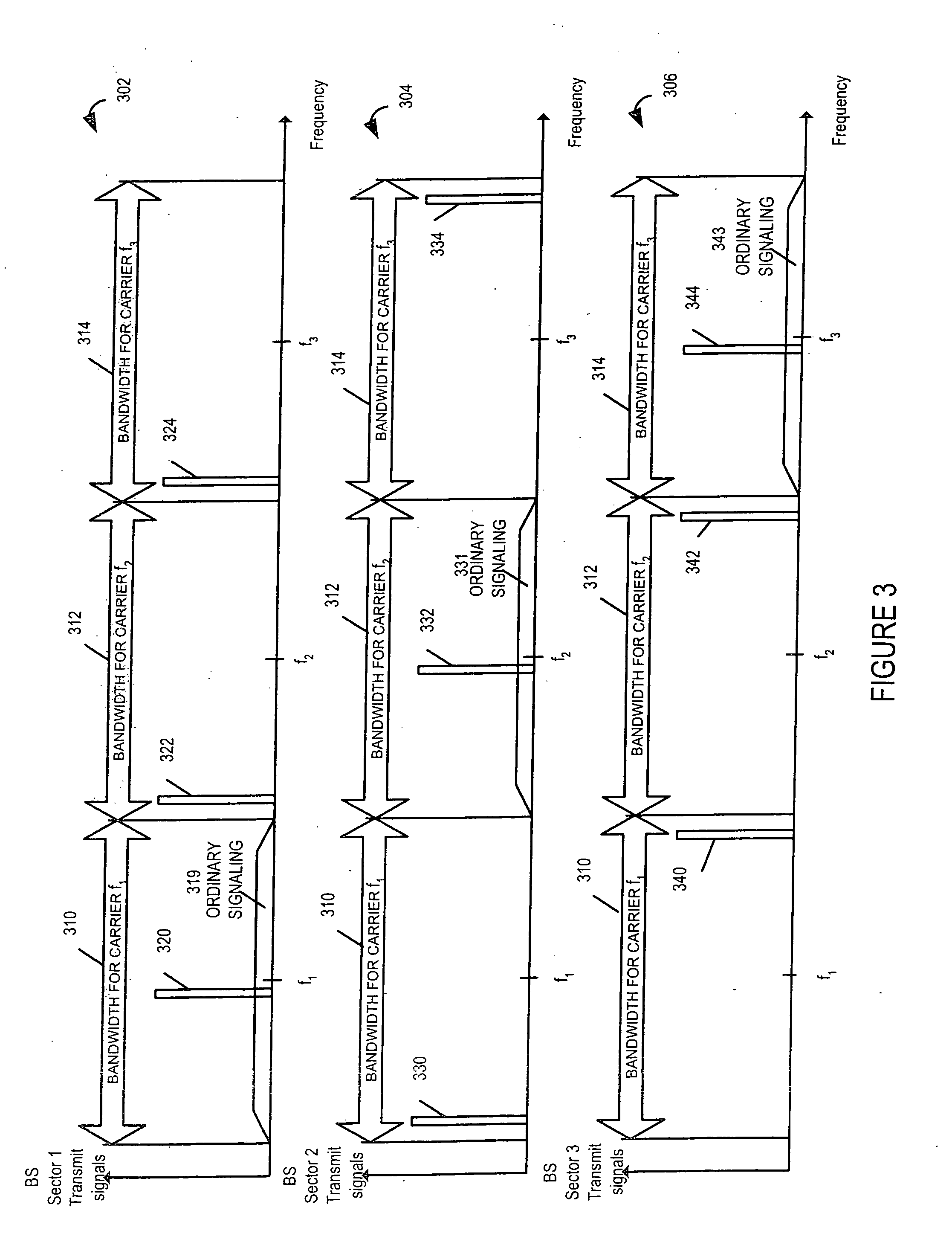Base station based methods and apparatus for supporting break before make handoffs in a multi-carrier system
a multi-carrier system and base station technology, applied in the field of multi-carrier communications systems, can solve the problems of multiple parallel receiver filter chains that are often too expensive to be practical, receivers that cannot receive information at intervals, and may take time to switch receivers between carrier frequencies, etc., to reduce delays and reduce uncertainty.
- Summary
- Abstract
- Description
- Claims
- Application Information
AI Technical Summary
Benefits of technology
Problems solved by technology
Method used
Image
Examples
Embodiment Construction
[0044] The present invention is directed to methods and apparatus for implementing handoffs involving a change in carrier frequencies. The handoffs may be between different cells, e.g., intercell handoffs, between sectors within a cell, e.g., intra-cell inter-sector handoffs or handoffs between different carriers within a sector, e.g., intra-sector inter-carrier handoffs. Inter-cell handoffs and intra-cell inter-sector handoffs often involve change of carriers.
[0045] The handoffs implemented in accordance with the present invention generally involve terminating a first communications link before completing the handoff and successful establishment of a second communications link, e.g., using a different carrier frequency. While discussed in the context of handoffs involving a change in carrier frequencies, some aspects of the present invention can be used to implement handoffs where the new and the old carrier frequencies used are the same but the point of network attachment changes...
PUM
 Login to View More
Login to View More Abstract
Description
Claims
Application Information
 Login to View More
Login to View More - R&D
- Intellectual Property
- Life Sciences
- Materials
- Tech Scout
- Unparalleled Data Quality
- Higher Quality Content
- 60% Fewer Hallucinations
Browse by: Latest US Patents, China's latest patents, Technical Efficacy Thesaurus, Application Domain, Technology Topic, Popular Technical Reports.
© 2025 PatSnap. All rights reserved.Legal|Privacy policy|Modern Slavery Act Transparency Statement|Sitemap|About US| Contact US: help@patsnap.com



